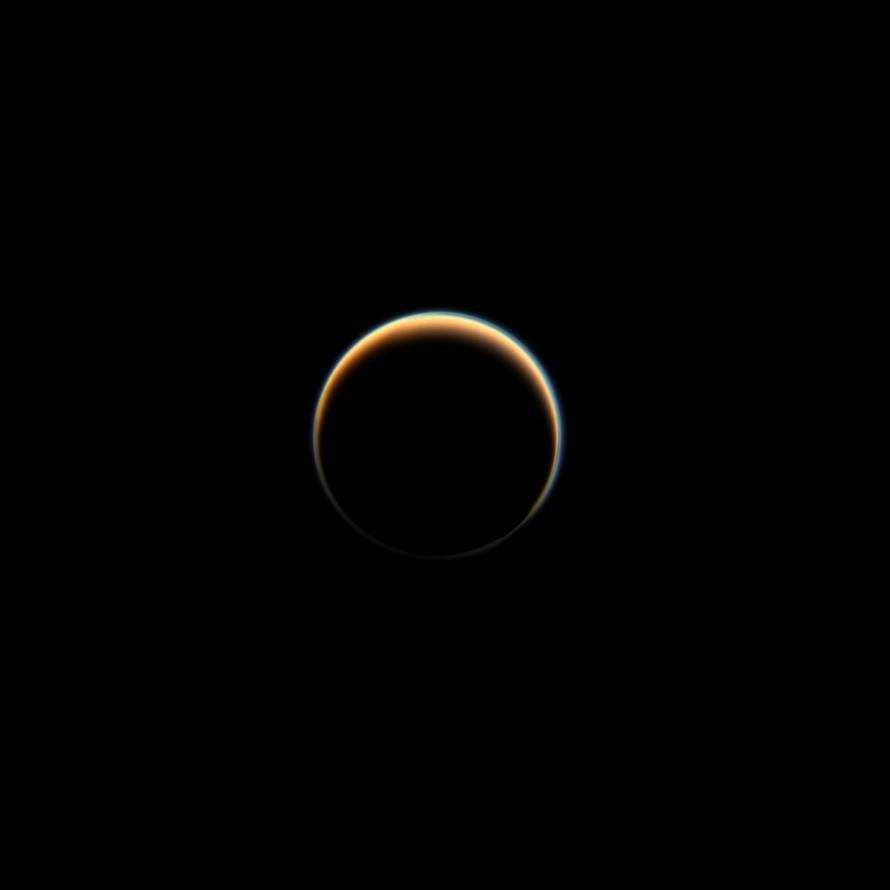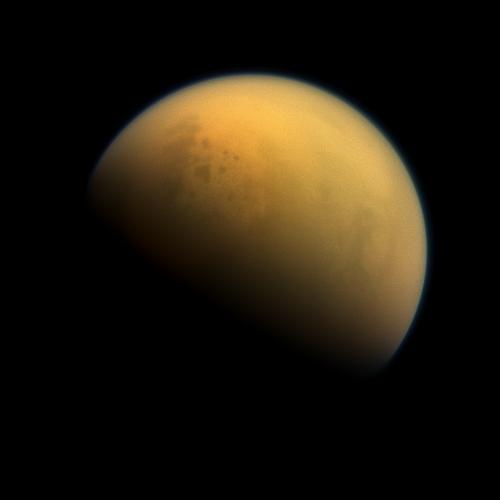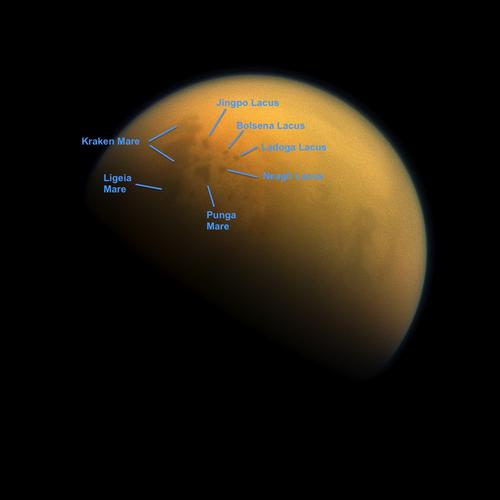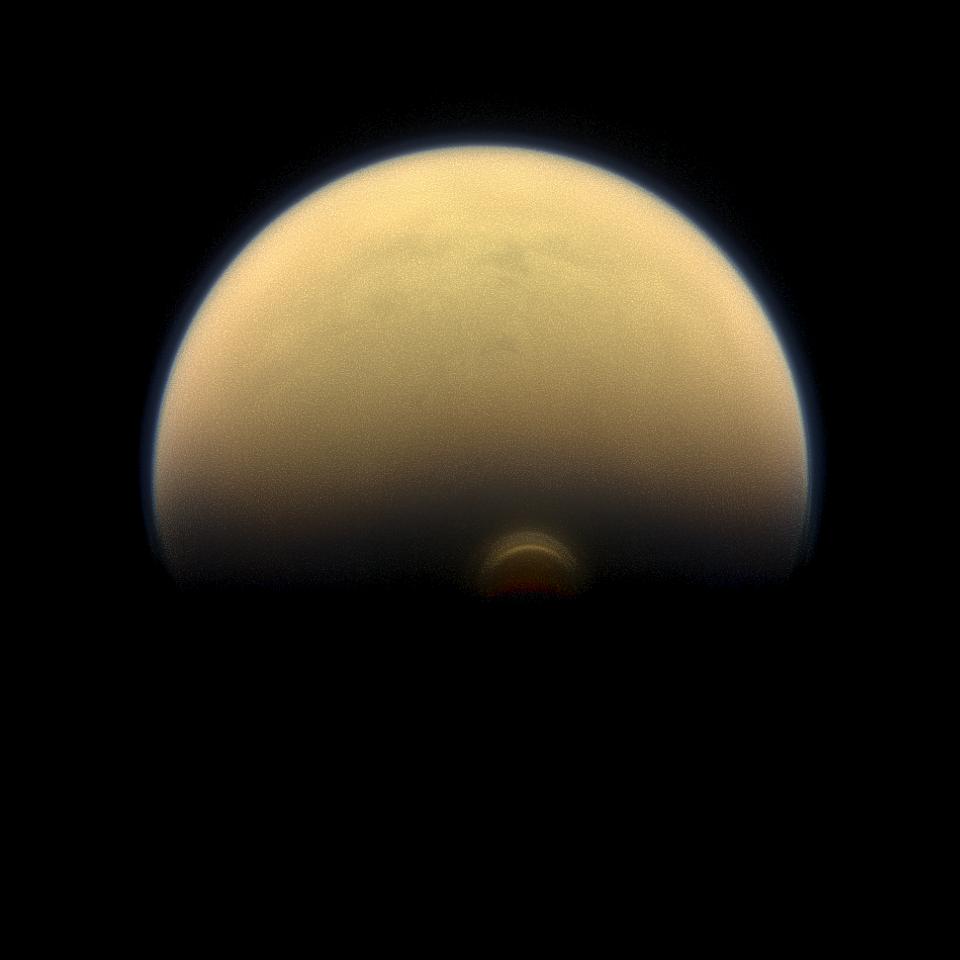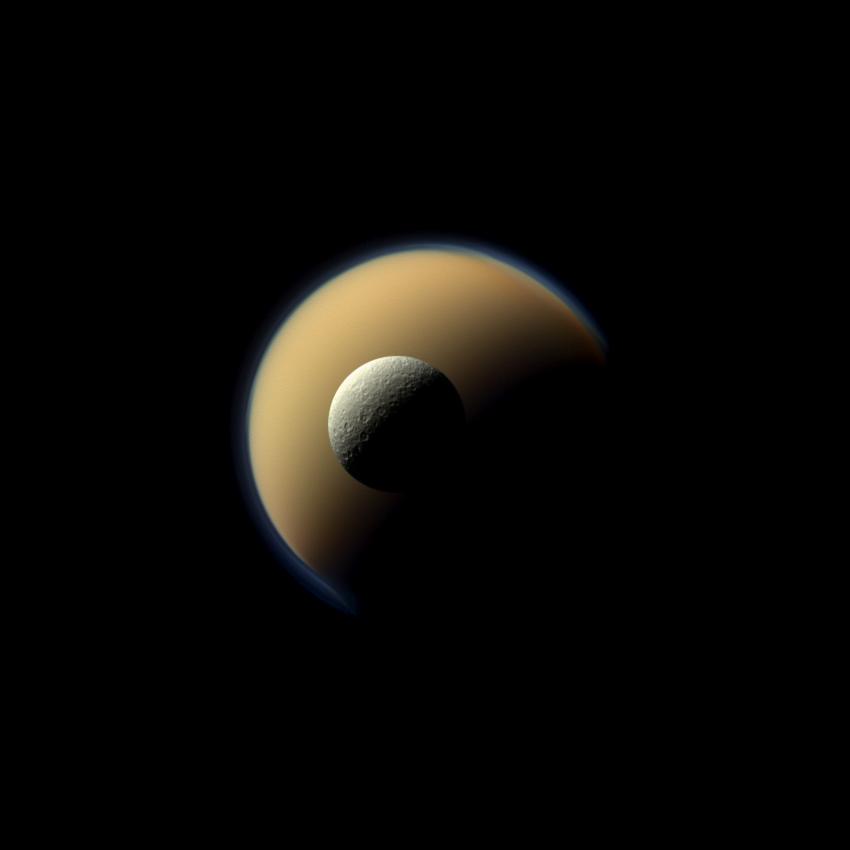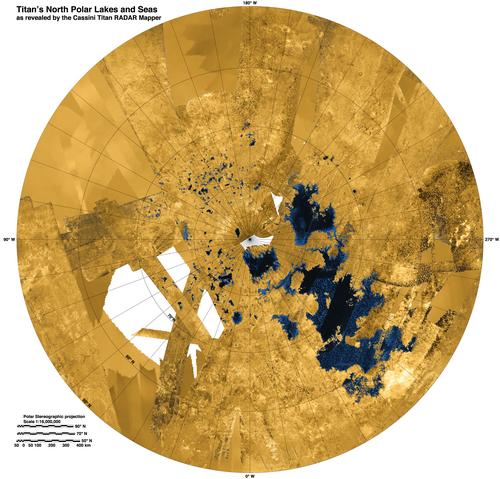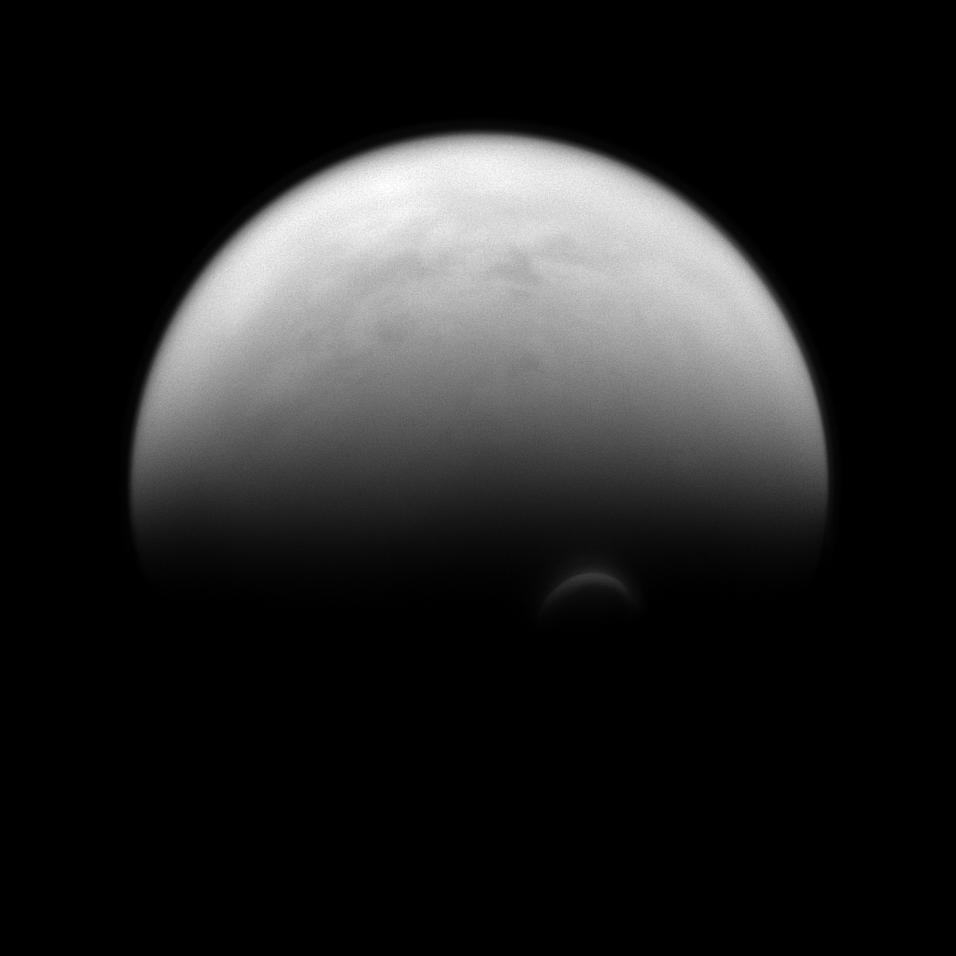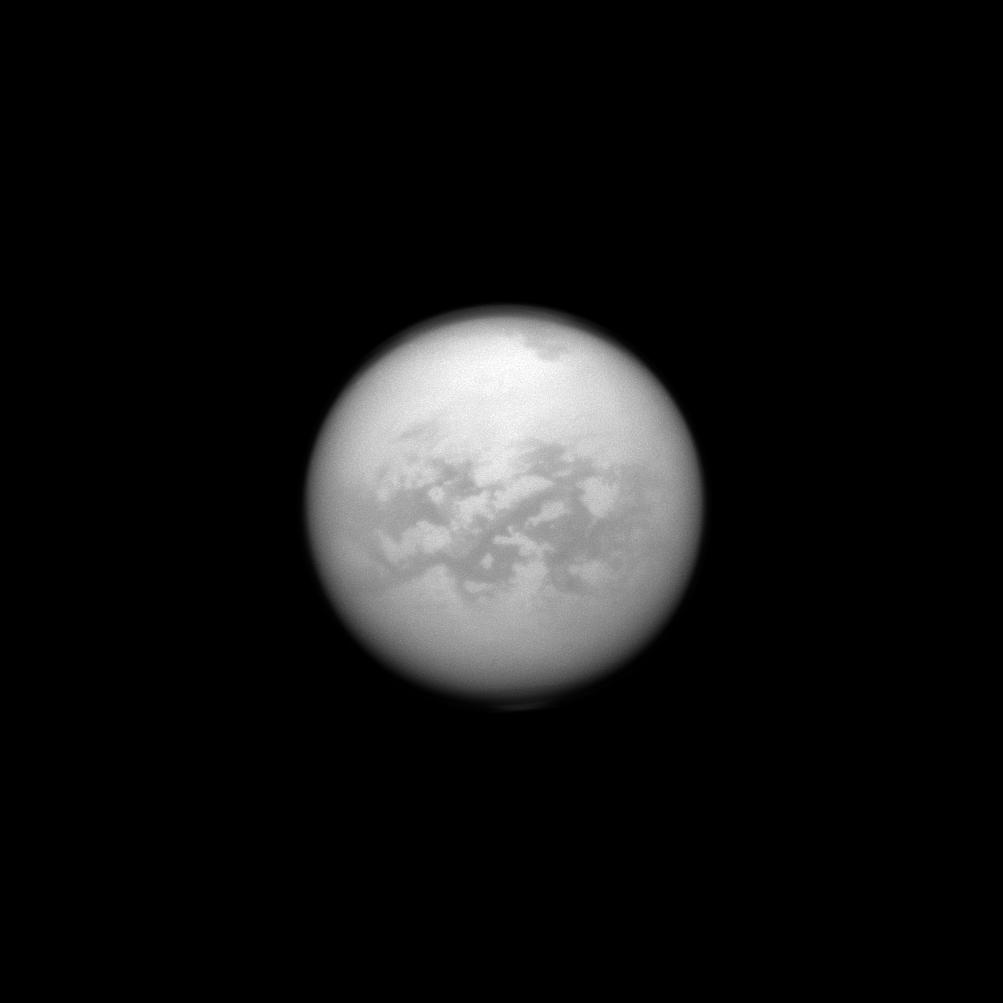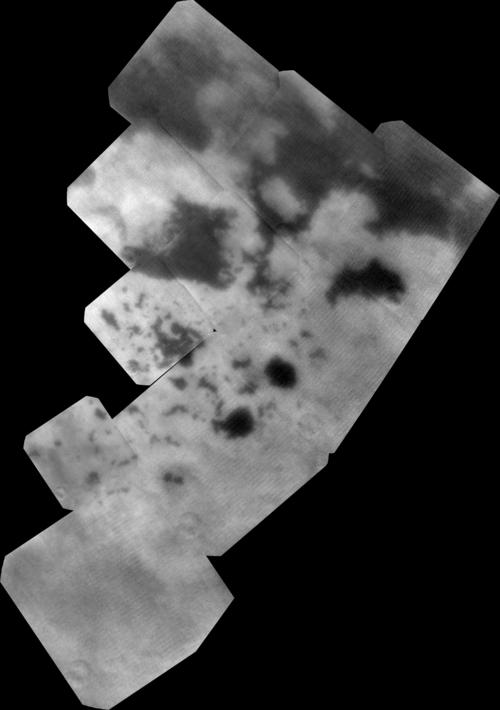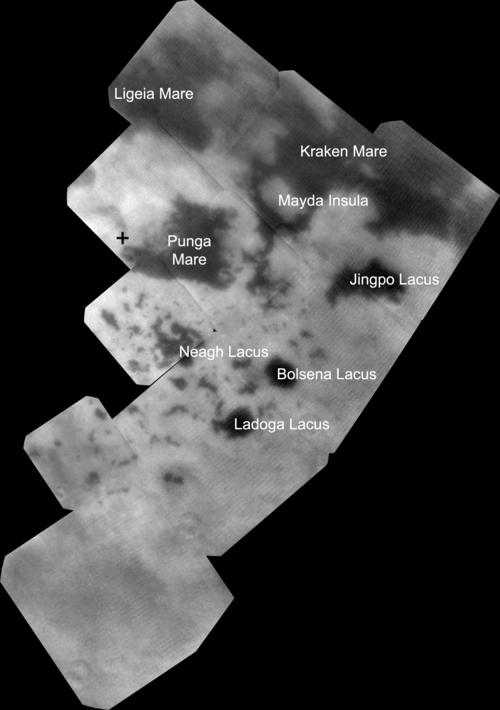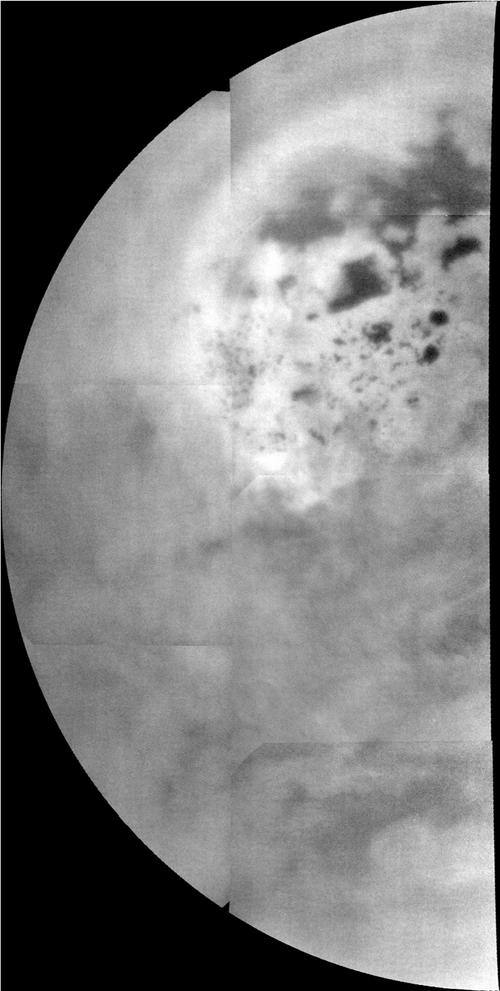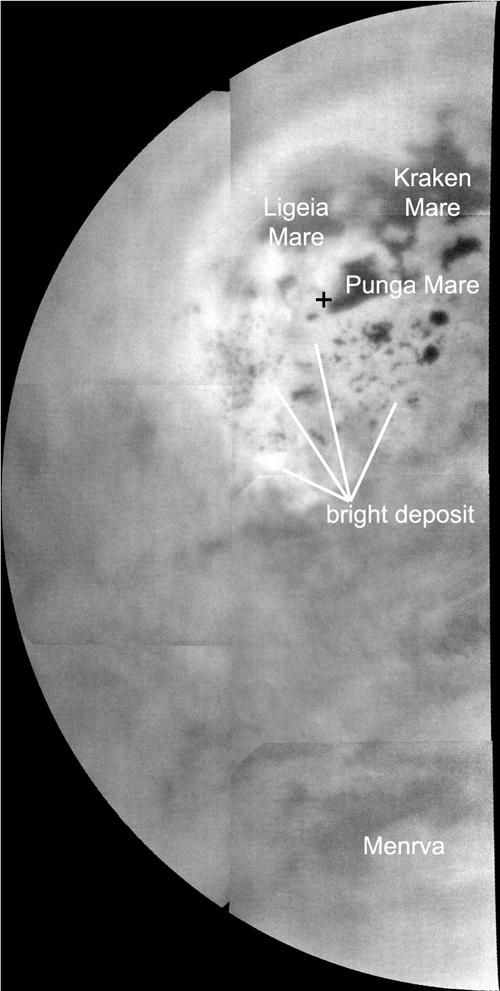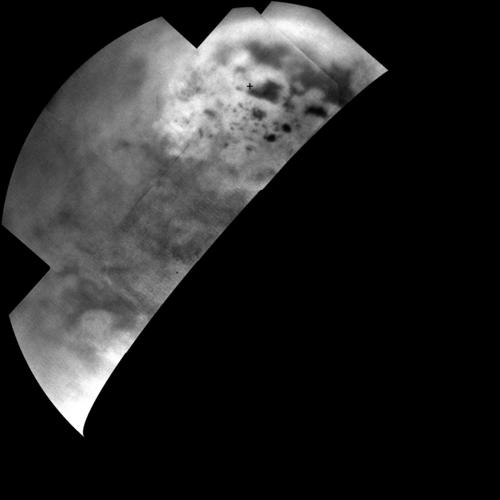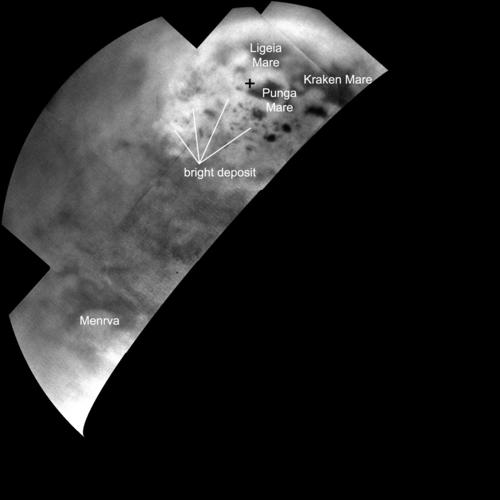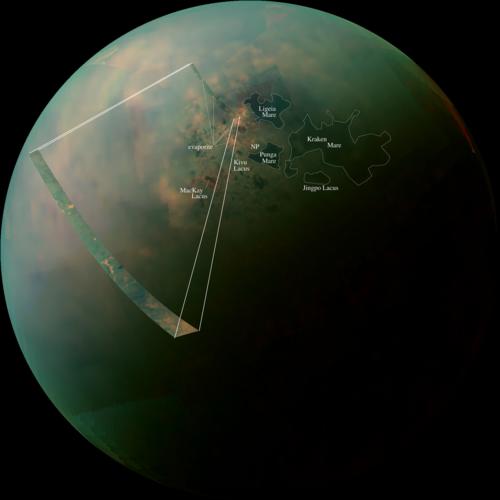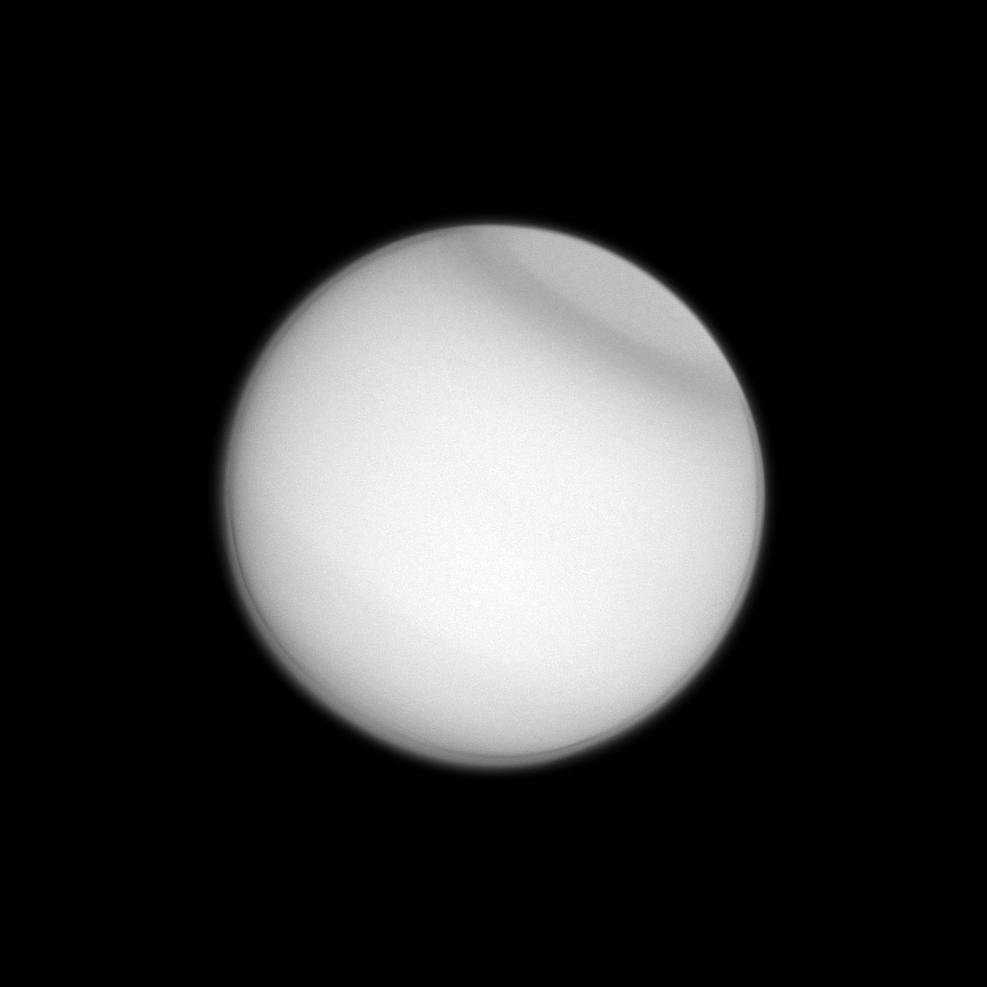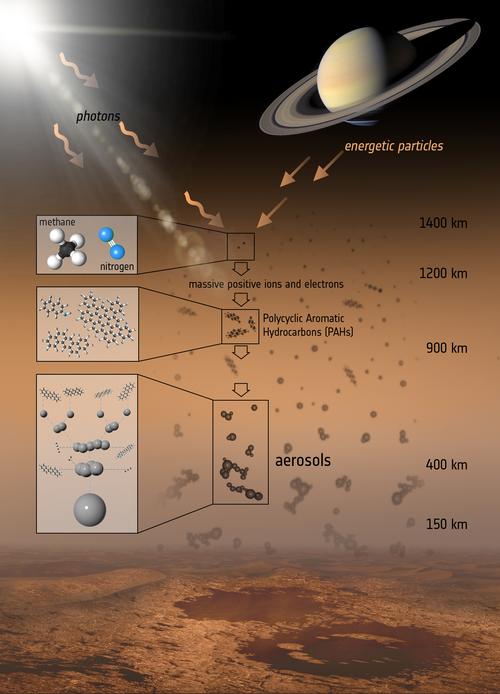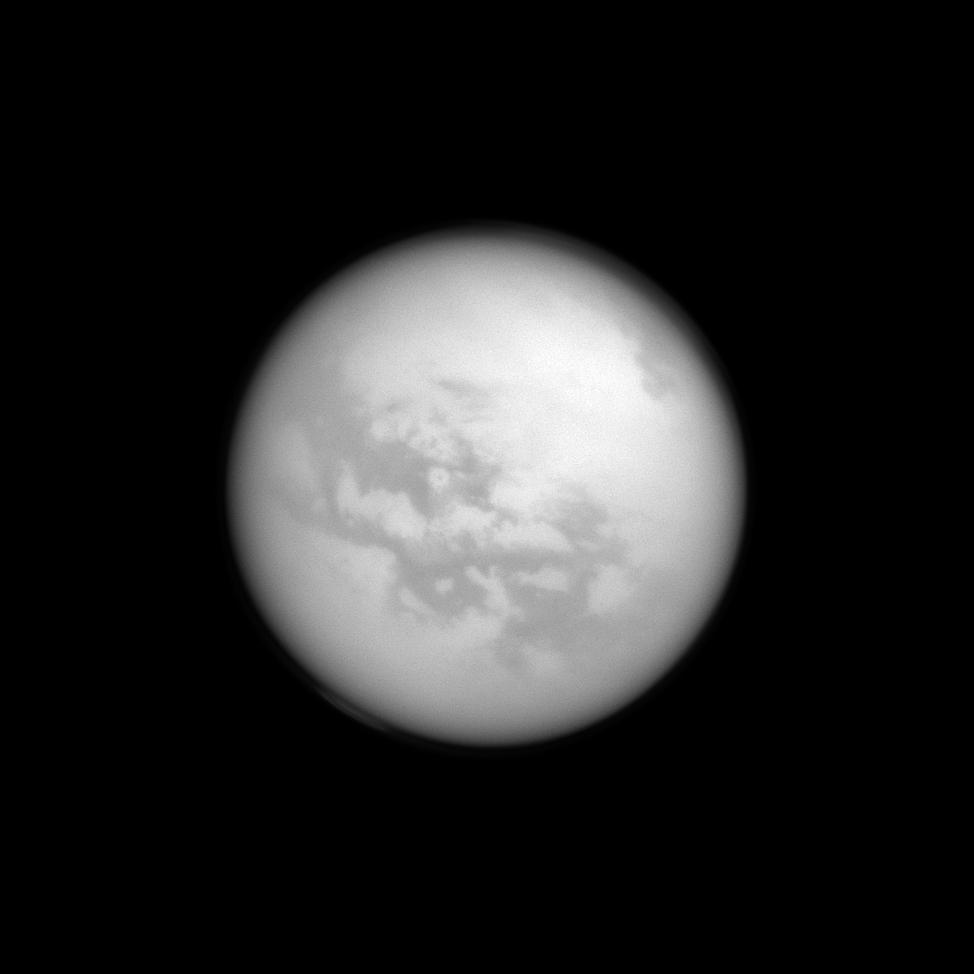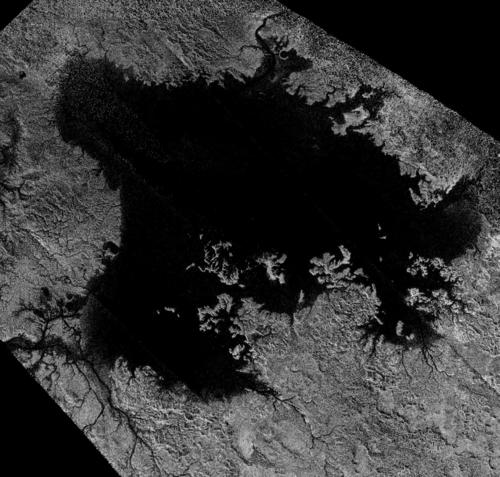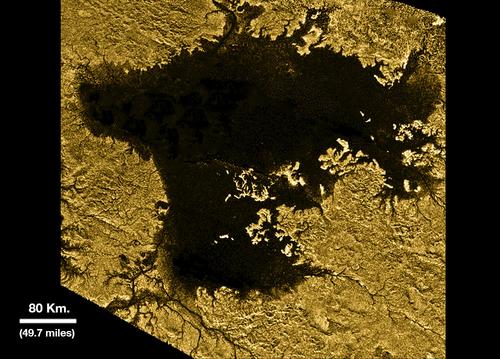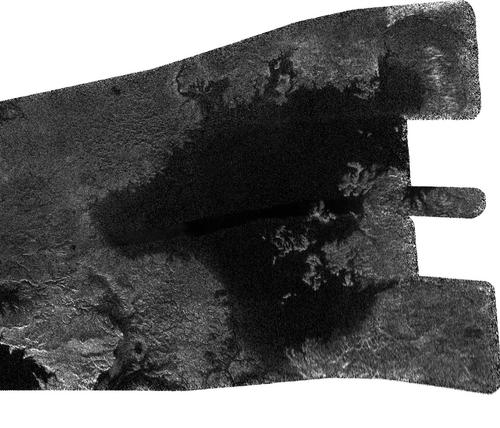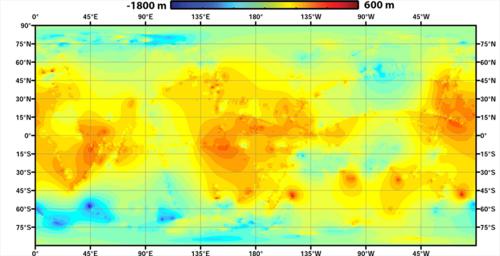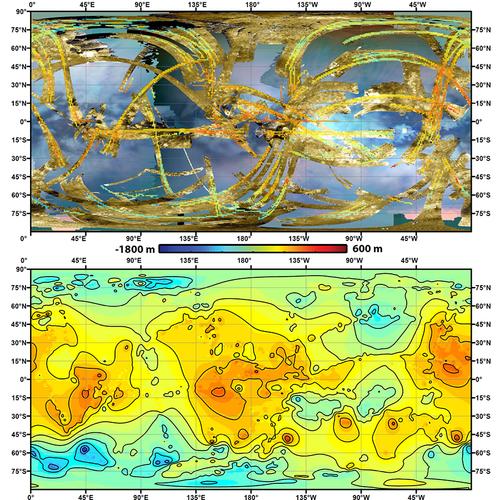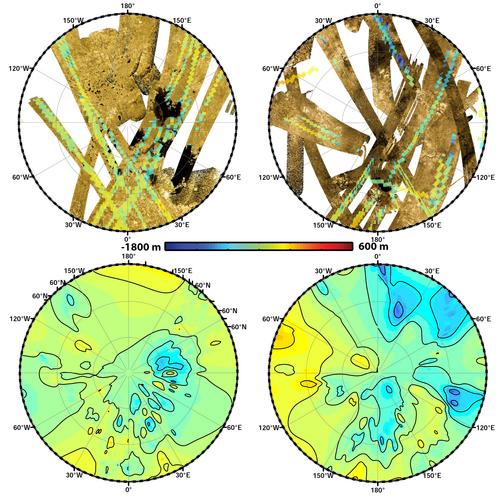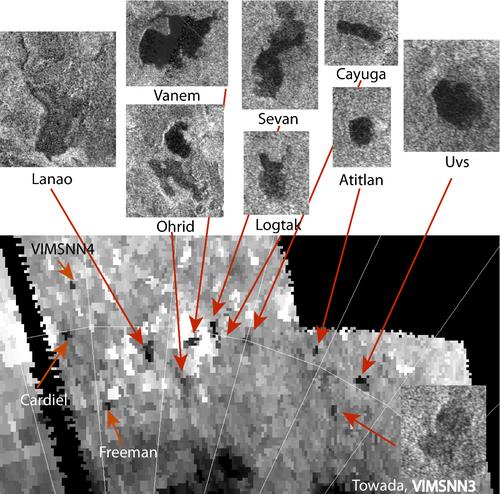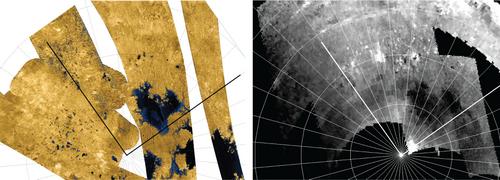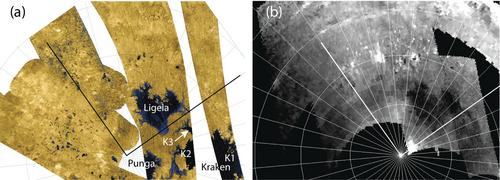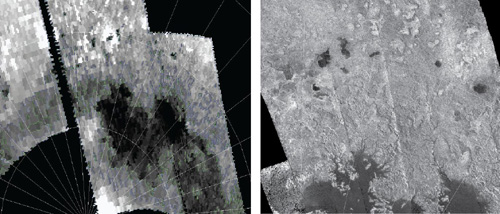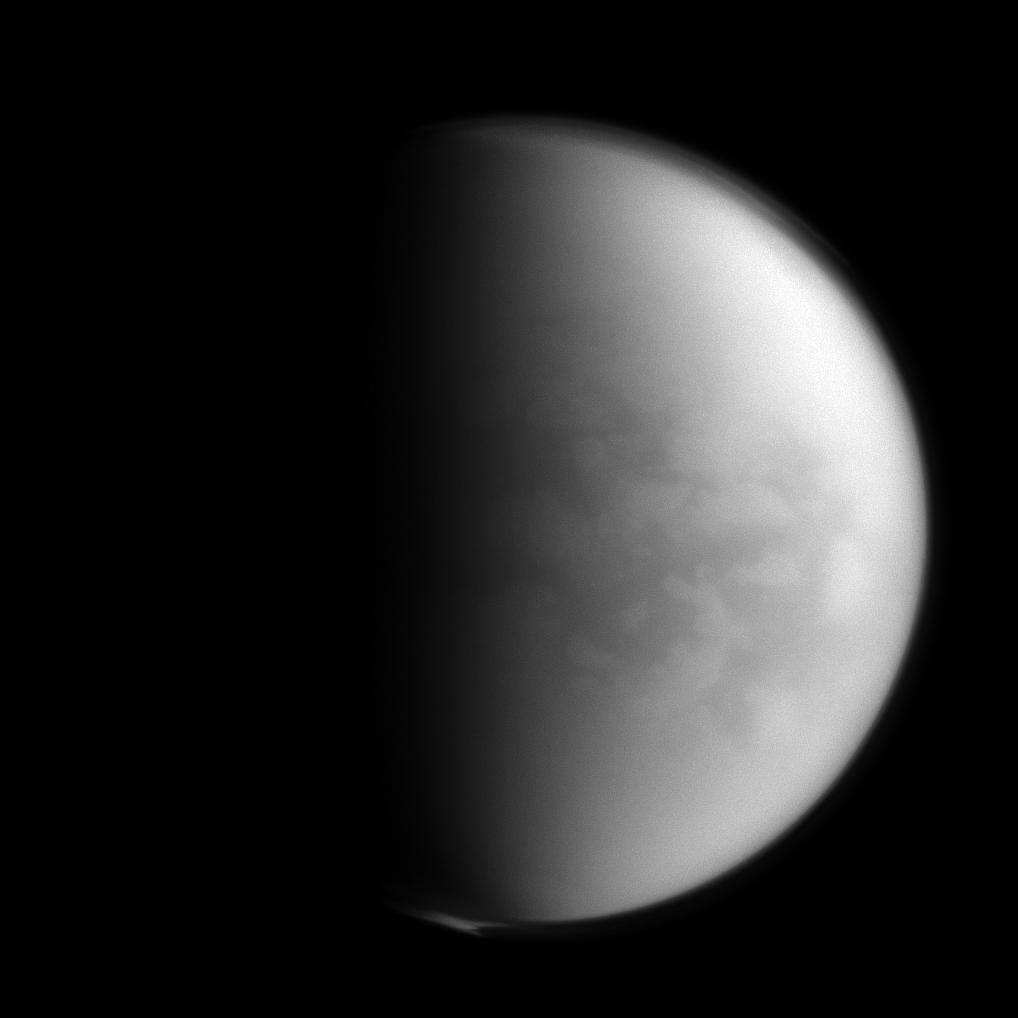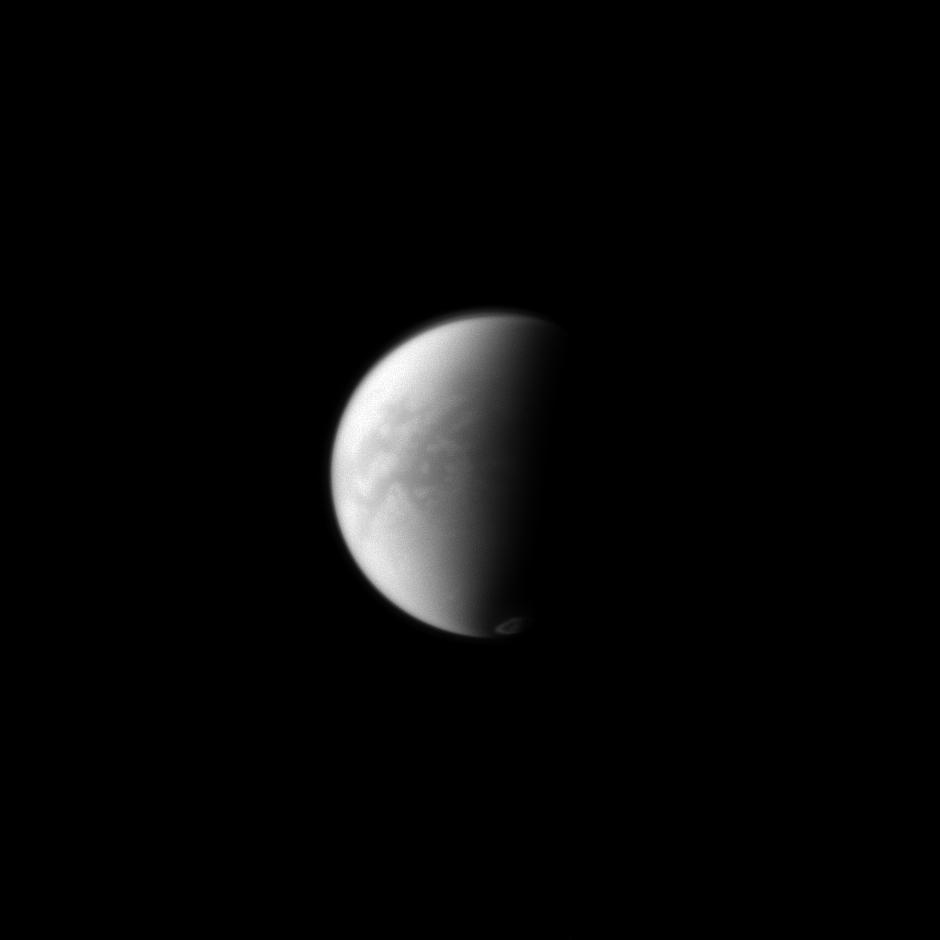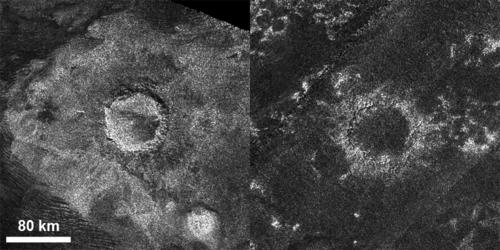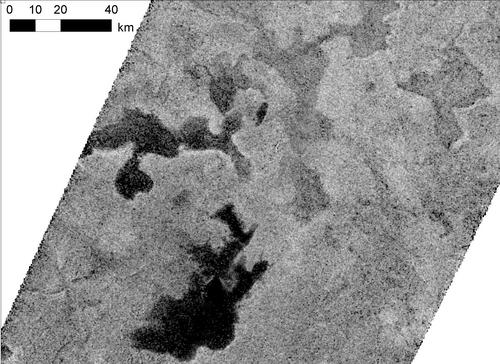The false-color mosaic, in the upper part of the table,
represents a global view of Titan's surface. The north polar region of
Saturn's largest moon can be clearly seen in this image. The high
latitudes of the northern hemisphere appear to be damp areas composed of a
multitude of seas, lakes and rivers. The bodies of liquids found on the
surface of the high latitudes seem to be mainly composed of ethane and
methane, two hydrocarbons which can appear in their liquid form on the
surface. Water can't appear in its liquid form on the surface of Titan.
Water may be widespread on the ground, in its solid form.
The image in the lower part of the table corresponds to the annotated
version of the mosaic shown in the upper part of the table. One can notice
the largest sea of Titan known as Kraken Mare in the upper right part of
the disc. One can also observe Ligeia Mare and Punga Mare close to the
north pole of the moon, represented by a red cross. Jingpo Lacus found
below Kraken Mare is among the largest bodies of liquids on the surface of
the north polar area. Most pools of liquids on the Orange Moon appear to
be concentrated in the north polar region. The strip in the annotated
version of the mosaic corresponds to a high-resolution portion of the
landscape.
The mosaic was constructed on the basis of infrared or near-infrared data
obtained with the Visual and Infrared Mapping Spectrometer of the Cassini
probe during a close flyby of the Opaque Moon on September 12, 2013. The
researchers converted near-infrared data into colors of the visible
spectrum to generate this artificial mosaic. They associated the red color
with a wavelength of 5 microns which is 10 times longer than visible
light. They associated the green color with a wavelength of 2 microns
which is four times longer than visible light. And they associated the
blue color with a wavelength of 1.3 microns which is 2.6 times longer than
visible light. The resolution on this map is heterogeneous, varying
depending on when each cube of data was taken, but the best surface
resolution is 2 miles or 3 kilometers per pixel.
The differences in colors on the surface of this globe bring clues
regarding the nature of the topography, the ground or the surface. The dark
areas which appear roughly uniform are associated with lakes or seas. The
orange regions seem to represent dried-up lakes or seas. One can notice in
particular a dark patch surrounded by an orange area. The researchers
suggest that the orange portions may represent evaporite, the equivalent
of salt flats on our planet. The evaporated compounds may be organic
molecules finding their origin in Titan's haze compounds that once
dissolved in the liquid primarily made of ethane and methane. One can
notice the contrast between the orange areas and the typical greenish
areas likely dominated by water ice.
The Summer season in the northern hemisphere is now approaching and the
solar radiations are beginning to better illuminate the north polar region.
The viewing geometry of the flyby of September 12, 2013 was better than
that of the past flybys during which the VIMS had only been able to obtain
distant, oblique or partial images of the north polar region. When the
Cassini probe reached the Saturn System in 2004, the north polar region of
Titan was in the darkness of the Winter season. The midnight Sun is now
arriving. The thick cap of haze which had been observed a few years ago
over the north polar region has apparently dissipated and no signs of
storms, rain or cloud activity were observed during the September 12, 2013
flyby. Will the lakes and seas start to evaporate during the next Summer
season in the northern hemisphere ?Image Credit:
NASA/JPL-Caltech/University of Arizona/University of
Idaho. |
